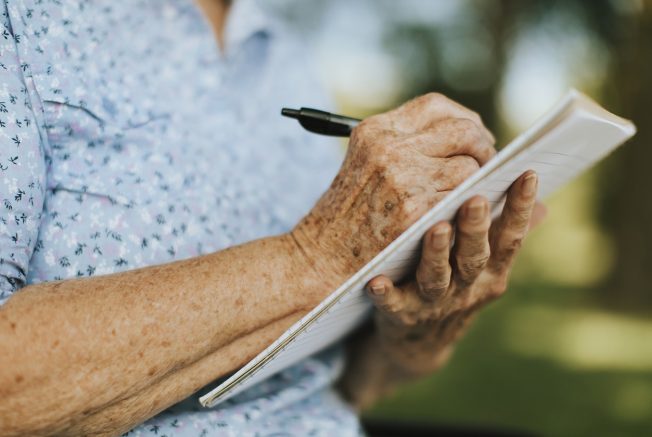Australian Statistics
- In 2021, it is estimated that the risk of a woman being diagnosed with breast cancer by their 85th birthday will be 1 in 7, while 19,866 Australian women will be diagnosed. This will make it the most commonly diagnosed cancer among Australians.
- In 2021, it is likely that it will remain the fifth-most common cause of death from cancer and the second-most common cause of death from cancer among females.
- Breast cancer is the most common cancer diagnosed in women, including Aboriginal and Torres Strait Islander women. Only around 5-10% of breast cancers are due to a strong family history.
- More than half of all breast cancers in Australia are discovered by the woman herself or her own doctor. The early detection of breast cancer can increase the chance of successful treatment.
- Nine out of 10 breast changes are not due to cancer, but you should see your doctor to be sure.
- The chance of surviving for at least five years after being diagnosed is about 91%.
- Breast cancer is also diagnosed in men (although the chances of this occurring are much lower than for women). About 167 men in Australia this year are estimated to be diagnosed with breast cancer.
Source: Cancer Australia 2019
Western Australian statistics
In 2017, 1,830 women were diagnosed with breast cancer in Western Australia
- 1,471 in metro areas, 359 in rural areas
- 249 women died from the disease in WA
In 2014, 1,737 women were diagnosed with breast cancer in Western Australia
- 1,384 in metro areas, 353 in rural areas
- 268 women died from the disease in WA
In 2012, 1608 women were diagnosed with breast cancer in Western Australia
- 1284 in metro areas, 324 in rural areas
- 285 women died from the disease in WA
In 2010, 1444 women were diagnosed with breast cancer in Western Australia
- 1163 in metro areas, 280 in rural areas
- 237 women died from the disease in WA
WA trends and projections on incidence
- 2012: 1440 cases
- 2013: 1470 cases
- 2014: 1501 cases
- 2019: 1658 cases
Source: Cancer Australia 2019, West Australian Cancer Registry, Australian Institute of Health and Welfare and Cancer Australia 2012, Breast cancer in Australia: an overview. Cancer series no. 71. Cat. No. CAN 67. Canberra: AIHW. Breast Cancer Network Australia, Current Breast Cancer Statistics in Australia, Figures are from the Australian Institute of Health and Welfare 2017 report, Cancer in Australia 2017. Cancer series no. 71. Cat. No. CAN 100. Canberra: AIHW
FAQs
What are the main risk factors for breast cancer?
A risk factor is anything that increases the possibility of getting a disease. Different cancers have different risk factors.
For example, we know that exposing skin to strong sunlight is a risk factor for developing skin cancer and that smoking is a risk factor for cancers of the lung, mouth, larynx, bladder, kidney, and several other organs.
Having one or more risk factors does not mean that a woman will definitely develop breast cancer, but it might increase her chance of developing breast cancer. Some women with one or more risk factors might never develop breast cancer.
Some risk factors like gender, age or race, cannot be changed. Some of the risk factors influence the likelihood of developing breast cancer more than other risk factors. The risk of developing breast cancer can change over time.
- Being female (men can get breast cancer but it is rare and accounts for less than 1% of all breast cancers);
- Having a strong family history of breast cancer (however, the majority of people who are diagnosed have no known family history);
- Inheriting a faulty gene (a gene mutation) that increases the risk of breast cancer; or
- Having previously been diagnosed with Breast Cancer or DCIS.
Other factors that seem to slightly increase a woman’s risk of developing breast cancer include:
- Starting menstruation at a relatively early age (before 12 years);
- Starting menopause at a relatively late age (after 55 years);
- Not having children or having a first child after 30 years of age;
- Not breastfeeding – the more months spent breastfeeding, the lower the risk of developing breast cancer;
- Taking combined Hormone Replacement Therapy (HRT) after menopause, especially when taken for 5 years or longer;
- Gaining a lot of weight in adulthood, especially after menopause;
- Drinking alcohol (more than 2 standard drinks a day); or
- Previously having been diagnosed with lobular carcinoma in situ (LCIS) or atypical hyperplasia.
Do antipersperants or deodorants increase your risk of breast cancer?
There is no scientific evidence that antiperspirants or deodorants increase the risk of breast cancer.
Can a physical trauma cause breast cancer?
Trauma to the breast does not increase your risk, however some breast cancers are found due to examinations resulting from trauma.

